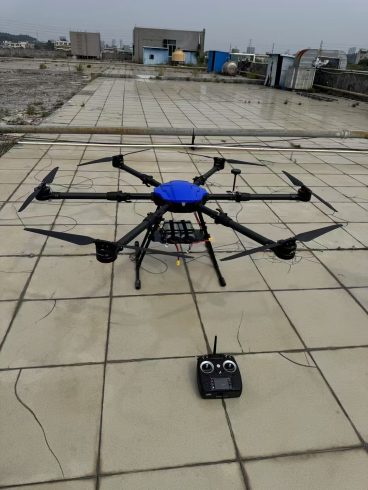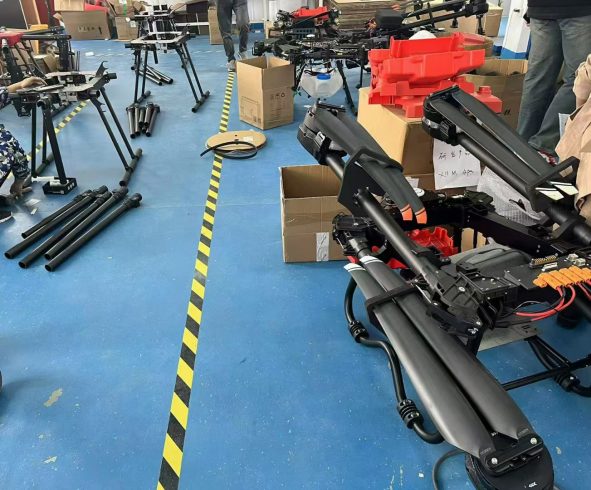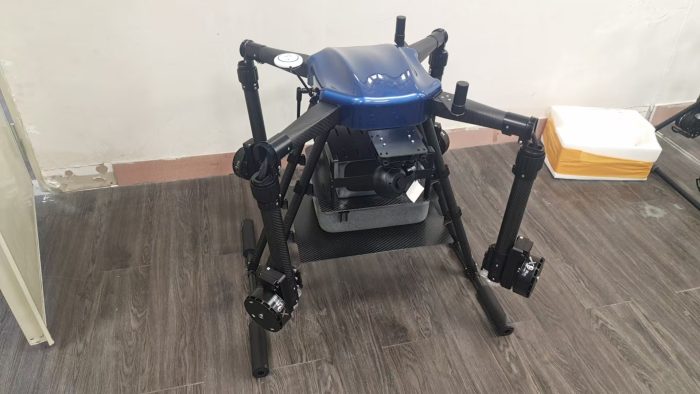![图片[1]-Drone Sprayers for Rice Fields: Precision, Efficiency, and Sustainability in Wetland Agriculture-msoen](https://www.msoen.com/wp-content/uploads/2025/04/4e0d9ec2ca214327-576x1024.jpg)
Discover how drone sprayers revolutionize rice field cultivation with precision pesticide application, reduced labor costs, and eco-friendly solutions. Learn key features, challenges, and best practices for optimizing wetland agriculture.
Introduction: The Unique Challenges of Rice Farming
Rice fields, characterized by waterlogged soils, dense vegetation, and labor-intensive workflows, present unique challenges for farmers. Traditional spraying methods—such as manual backpacks or tractor-mounted systems—struggle with uneven terrain, high chemical waste, and labor shortages. Drone sprayers for rice fields offer a transformative solution, combining precision agriculture with adaptability to wetland environments. This article explores how drones enhance efficiency, reduce costs, and promote sustainability in rice cultivation.
- Why Rice Fields Need Specialized Drone Sprayers
Rice farming involves distinct conditions that demand tailored solutions:
- Waterlogged Terrain: Conventional machinery often fails in muddy or flooded fields.
- High Crop Density: Dense rice stalks require precise chemical penetration.
- Frequent Applications: Rice is vulnerable to pests and diseases at multiple growth stages.
- Labor Constraints: Manual spraying is time-consuming and physically demanding.
Drone sprayers address these challenges by navigating flooded fields, delivering uniform coverage, and automating repetitive tasks.
- Key Advantages of Drone Sprayers in Rice Cultivation A. Precision Spraying in Complex Environments
- Obstacle Navigation: AI-powered drones avoid overhead cables, tree barriers, and uneven water levels.
- Targeted Application: Multispectral sensors detect pest hotspots, ensuring chemicals reach affected areas without overuse.
- Variable Rate Control: Adjust spray intensity based on crop height and density, optimizing chemical use. B. Adaptability to Wetland Conditions
- Waterproof Design: Robust builds resist humidity, splashes, and prolonged exposure to water.
- Terrain Following: Sensors maintain consistent altitude above water surfaces for even coverage.
- Low-Altitude Flight: Hovering at 1–2 meters ensures penetration into dense rice canopies. C. Cost and Time Savings
- Reduced Labor: Eliminates the need for teams to traverse flooded fields.
- Lower Chemical Waste: Precise targeting cuts pesticide use by up to 30%.
- Faster Coverage: Drones treat acres in minutes, ideal for time-sensitive applications like seedling protection.
- Essential Features for Rice Field Drone Sprayers A. Waterproof and Corrosion-Resistant Build
- Stainless steel components and sealed electronics withstand prolonged exposure to moisture.
- Salt-resistant coatings for coastal rice paddies. B. Advanced Spraying Systems
- Centrifugal Nozzles: Prevent clogging in humid conditions and maintain consistent flow.
- Swath Width Adjustment: Match spray patterns to rice field rows (e.g., 3–8 meter swaths). C. Smart Navigation and Sensors
- RTK GPS: Centimeter-level accuracy for repeatable flight paths.
- Thermal Cameras: Monitor water levels and detect pest-infested areas.
- Applications in Rice Farming
- Seedling Protection: Early-stage pesticide application to prevent insect damage.
- Fungal Control: Target sheath blight and blast disease with fungicide sprays.
- Nutrient Boosting: Foliar feeding during tillering or flowering phases.
- Post-Flood Recovery: Rapid re-spraying after water recedes to protect recovering crops.
- Overcoming Challenges in Wetland Agriculture A. Managing Humidity and Rainfall
- Weather Resilience: Schedule flights during low-humidity windows (early morning) to minimize evaporation.
- Quick-Drying Formulations: Partner with agronomists to select chemicals that work in humid climates. B. Navigating Crop Canopies
- Obstacle Avoidance: LiDAR or ultrasonic sensors prevent collisions with rice stalks.
- Altitude Adjustments: Lower flight heights during tillering to target pests hiding in lower leaves. C. Maintenance in Harsh Conditions
- Post-Flight Cleaning: Rinse nozzles and tanks after each use to prevent chemical buildup.
- Rust-Proof Coatings: Extend drone lifespan in saline or muddy environments.
- Future Innovations for Rice Drone Sprayers
- Swarm Technology: Coordinated fleets of drones for large-scale paddy fields.
- AI-Powered Predictive Analytics: Early pest/disease detection using historical weather and crop data.
- Solar Charging Stations: Sustain operations in remote, off-grid rice farms.
Conclusion: Elevate Rice Farming with Smart Drone Solutions
Drone sprayers are no longer optional—they’re essential for modern rice cultivation. By combining precision, adaptability, and sustainability, these drones empower farmers to protect yields, reduce costs, and safeguard ecosystems.
Call to Action:
Ready to transform your rice farming? Explore our waterproof agricultural drones designed for wetland efficiency. Contact us today to build a smarter, greener future for your farm!












暂无评论内容